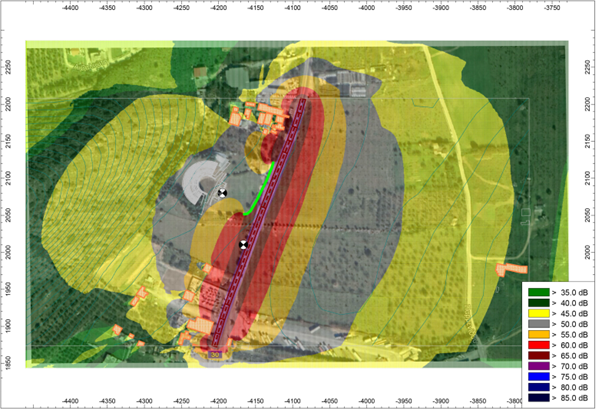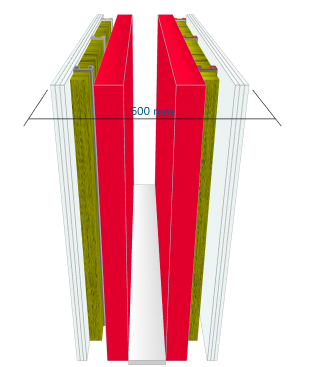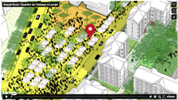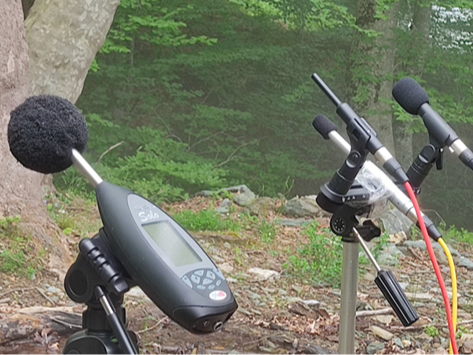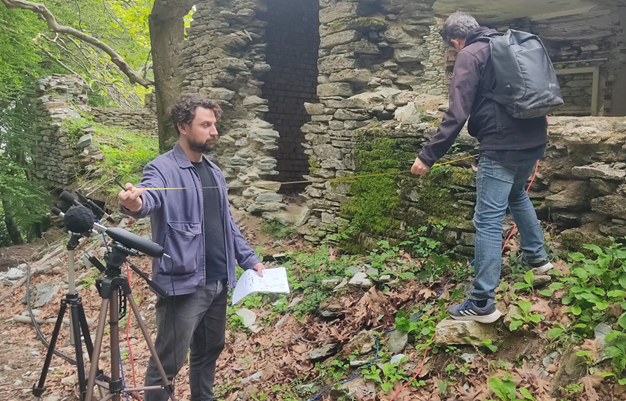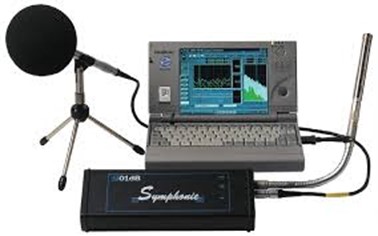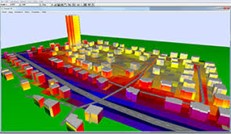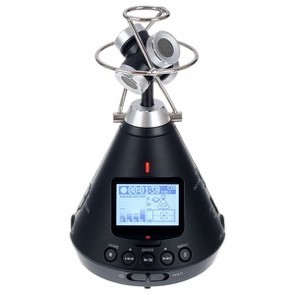Acoustic design
The laboratory develops knowledge and techniques for acoustic design of the environment, in collaboration with energy design and computer-aided design and construction (CAM + CAD).
This integrated approach allows for the optimization of acoustic performance, taking into account energy and environmental requirements.
Thanks to the use of modeling and simulation software, the laboratory offers innovative solutions for sustainable and efficient projects.
The Sustainable Design of the Built Environment Laboratory plays a key role in promoting the acoustic quality of the environment.
It actively participates in the design of spaces that harmoniously integrate the principles of sustainability and acoustic comfort.
Its work covers three main areas: environmental acoustics, which analyzes and mitigates the effects of noise in outdoor spaces; room and building acoustics, which aims to optimize the acoustic performance of indoor spaces, such as auditoriums, residences or workplaces; and, finally, sound atmospheres and soundscapes, which examine the sensitive and aesthetic dimensions of the sound environment.
Through research, in-depth studies and educational programs, the laboratory contributes to raising awareness among construction sector stakeholders about the importance of good acoustic design for the well-being of users and the design and creation of the sound environment.
|
Simulation of the environmental noise of the ancient |
Environmental Acoustics In the field of environmental acoustics, the laboratory actively contributes to the implementation of Directive 2002/49/EC on the management of environmental noise. It participates in research and studies aimed at the preparation of Strategic Noise Maps (SNM) and the development of Noise Action Plans (NAP). Through these actions, it aims to analyze and mitigate the impacts of noise on urban and natural environments, promoting the adoption of sustainable solutions and improving the quality of life of citizens. This activity enhances the awareness and information of stakeholders and the public on the importance of environmental noise management. |
|
Acoustics & Building Applications In the field of hall and building acoustics, it plays a decisive role in architectural studies for the design and construction of conference rooms, theaters and residences. The importance of a correct acoustic design in architectural studies is essential, not only to avoid acoustic defects and limit the additional costs associated with post-construction corrections, but also to think about the space as a whole. A well-thought-out acoustic approach allows the creation of comfortable, flexible and adapted to the needs of all users. By integrating acoustic solutions from the beginning of the design, we ensure sustainable spaces, where the well-being of the users is at the center of thought and where acoustic performance contributes to a better quality of life in the long term. |
|
|
Biosourced materials Biologically derived materials for architecture. An emerging direction in the laboratory’s activities is the use of bio-based materials, including those derived from agricultural residues in the local area, and their integration into architectural practice. These materials, based on renewable and local sources, offer a double benefit: they reduce the carbon footprint of the building sector, while at the same time valorizing agricultural by-products. Their acoustic properties, combined with their low environmental impact, make them ideal choices for sustainable construction. Furthermore, they offer new creative opportunities, allowing architects to innovate while simultaneously responding to the ecological and social challenges of their region. The laboratory actively explores these approaches, with the aim of promoting a more responsible and sustainable architecture. |
Moss from the Pelion forest |
Laboratory Equipment

 EL
EL  EN
EN 